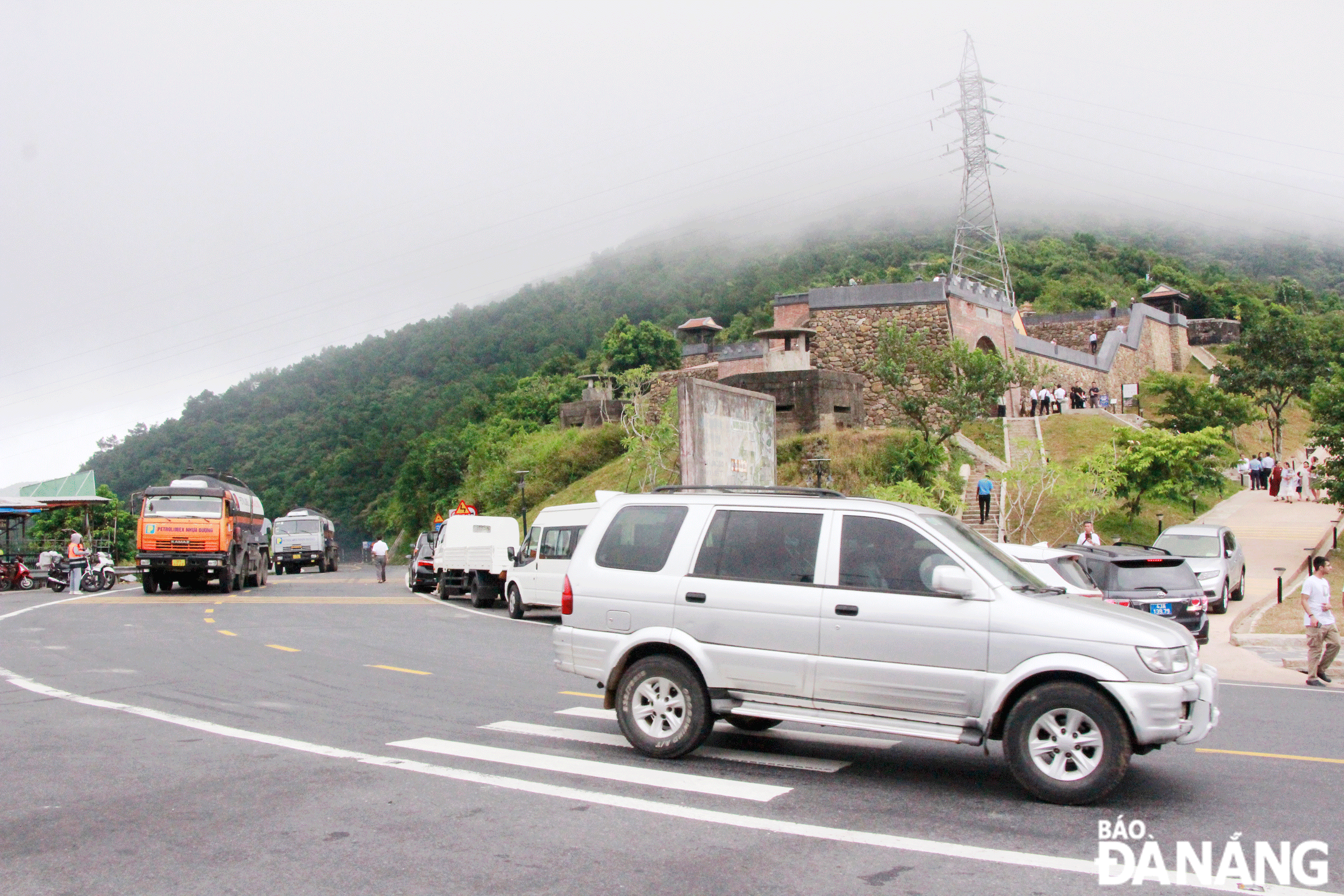Urgent need for infrastructure investment at Hai Van Gate
The Hai Van Gate, a national heritage site, completed its restoration and officially reopened in August 2024, attracting hundreds of visitors daily, especially during holidays and weekends. However, the surge in visitors has exposed a range of deficiencies in its tourism infrastructure, particularly the lack of parking facilities, which urgently needs to be addressed.
 |
| Many large vehicles passing through the Hai Van Pass can easily cause traffic jams. Photo: X.D |
Perched atop the mountain pass connecting Hue and Da Nang, the Hai Van Gate has become a prominent tourist destination and an ideal stopover for those exploring Central Viet Nam’s heritage sites.
Since reopening with free entry, the number of visitors has significantly increased. Nevertheless, many basic amenities are still missing, such as parking areas, souvenir shops, public restrooms, and water supplies. Even the railings along the stairs leading up to the site are inadequately secured with loose cables, posing safety concerns.
A major issue is the lack of designated parking spaces, as the pass is primarily used by large trucks and hazardous cargo vehicles. However, with the recent influx of tourists, large buses and cars stopping at the site are contributing to traffic congestion and safety risks. Business owners near the peak of the pass have also reported that vehicles park indiscriminately, blocking road visibility and causing chaos. Meanwhile, motorcyclists leave their bikes in unsecured areas, which raises concerns about theft and security.
According to Mr Le Tan Trung, a local transport driver, the situation has become increasingly stressful, as the growing number of visitors often walk carelessly across the road while vehicles are still moving. If the number of visitors continues to increase without appropriate measures, traffic accidents are inevitable. Authorities need to quickly establish parking lots and regulate business activities at the summit.
Solutions expected in Q4 2024
In an attempt to address these concerns, the Hue Imperial Relics Conservation Centre has employed eight staff members to manage security, order, and sanitation at the site. Da Nang's Lien Chieu District has also established a security team to oversee activities in the area.
According to Hoang Viet Trung, Director of the Hue Imperial Relics Conservation Centre, nearly 79,000 visitors have visited the Hai Van Gate since its reopening. To manage the initial influx, the centre has deployed additional personnel. However, with visitor numbers sometimes overwhelming the site, the need for coordinated management between Da Nang and Thua Thien Hue is critical.
Immediate priorities include constructing restrooms, installing water systems, building an entrance gate with a barrier, and setting up Wi-Fi. The local authorities of both regions are also cooperating to ensure road safety by directing traffic flow to minimize congestion. Plans are underway to survey potential parking areas.
During a visit to Thua Thien Hue on September 10, Ms Nguyen Thi Anh Thi, Vice Chairwoman of the Da Nang People’s Committee, commended the collaboration between agencies in managing Hai Van Gate and proposed that management of the site be shared between Da Nang’s Lien Chieu District and Hue’s Imperial Relics Conservation Centre, alternating every three years. Regarding ticket sales, Vice Chairwoman Thi suggested further research, with proposed ticket prices ranging from VND 50,000 to 70,000.
However, she emphasised that infrastructure investment is the current priority. “We cannot charge entry fees until the necessary infrastructure is in place to meet visitor demands,” she said. The authorities from both regions aim to identify a suitable location for a parking lot by the fourth quarter of 2024. Additionally, they plan to work with 15 local businesses to upgrade their facilities to ensure uniformity in the site's appearance and avoid unsightly conditions.
Both regions are also expected to finalise a draft cooperation agreement, which will outline procedures for inspections, law enforcement, traffic safety management, and environmental sanitation at the site. The restored Hai Van Gate is set to be inaugurated by December 2024. The agreement will also include provisions for promoting the site's value to the public and tourists through coordinated communication efforts.
Reporting by XUAN DUNG - Translating by TRUC VY